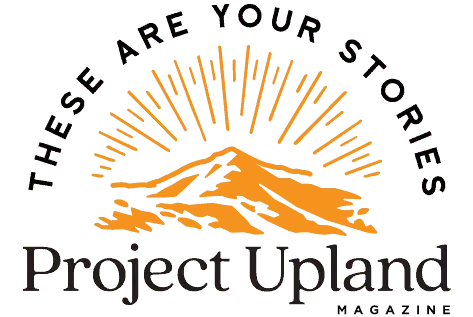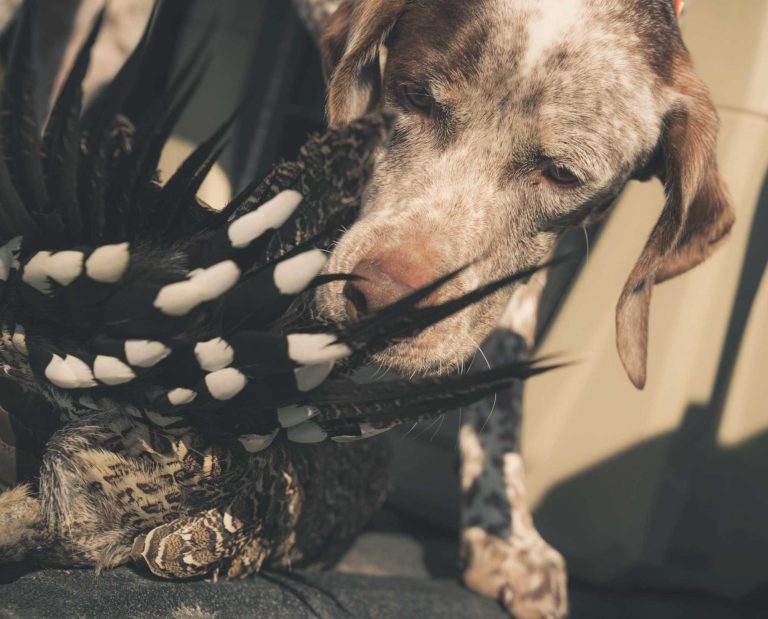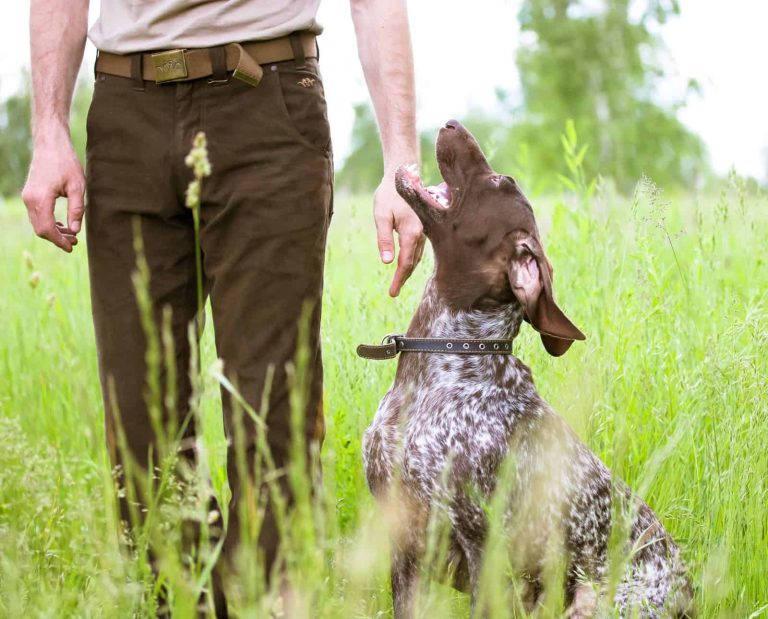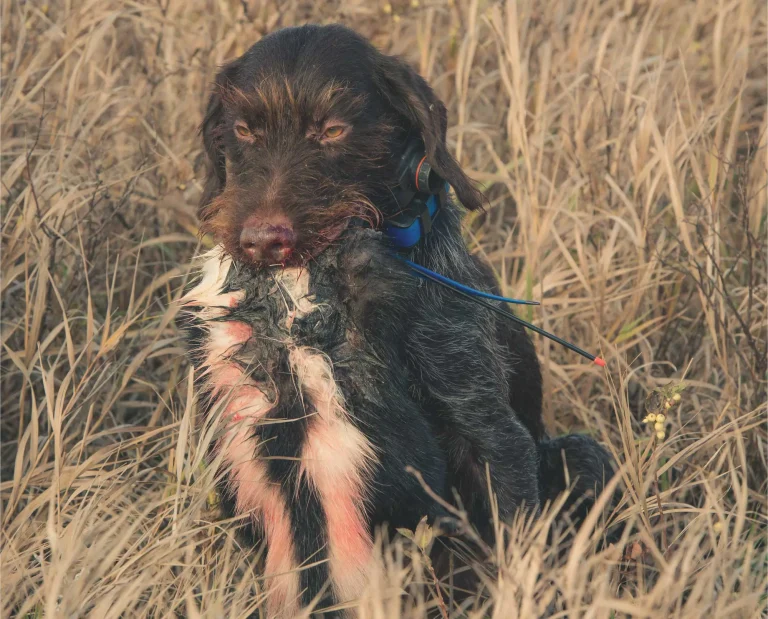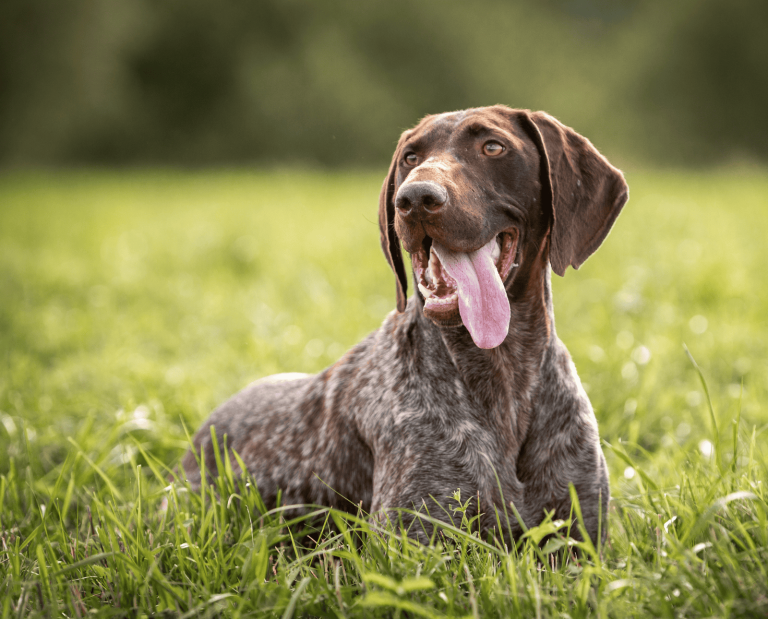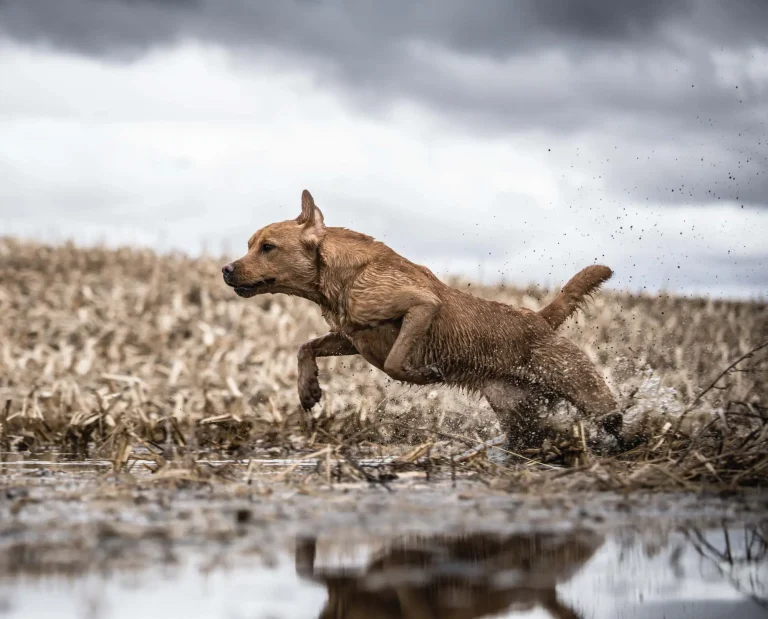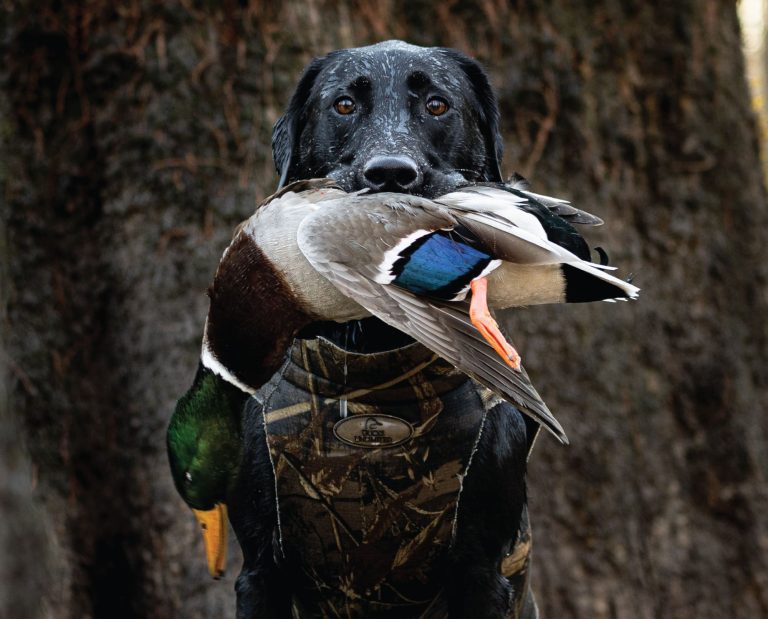Thinking About Dog Commands to Avoid Confusion in Training
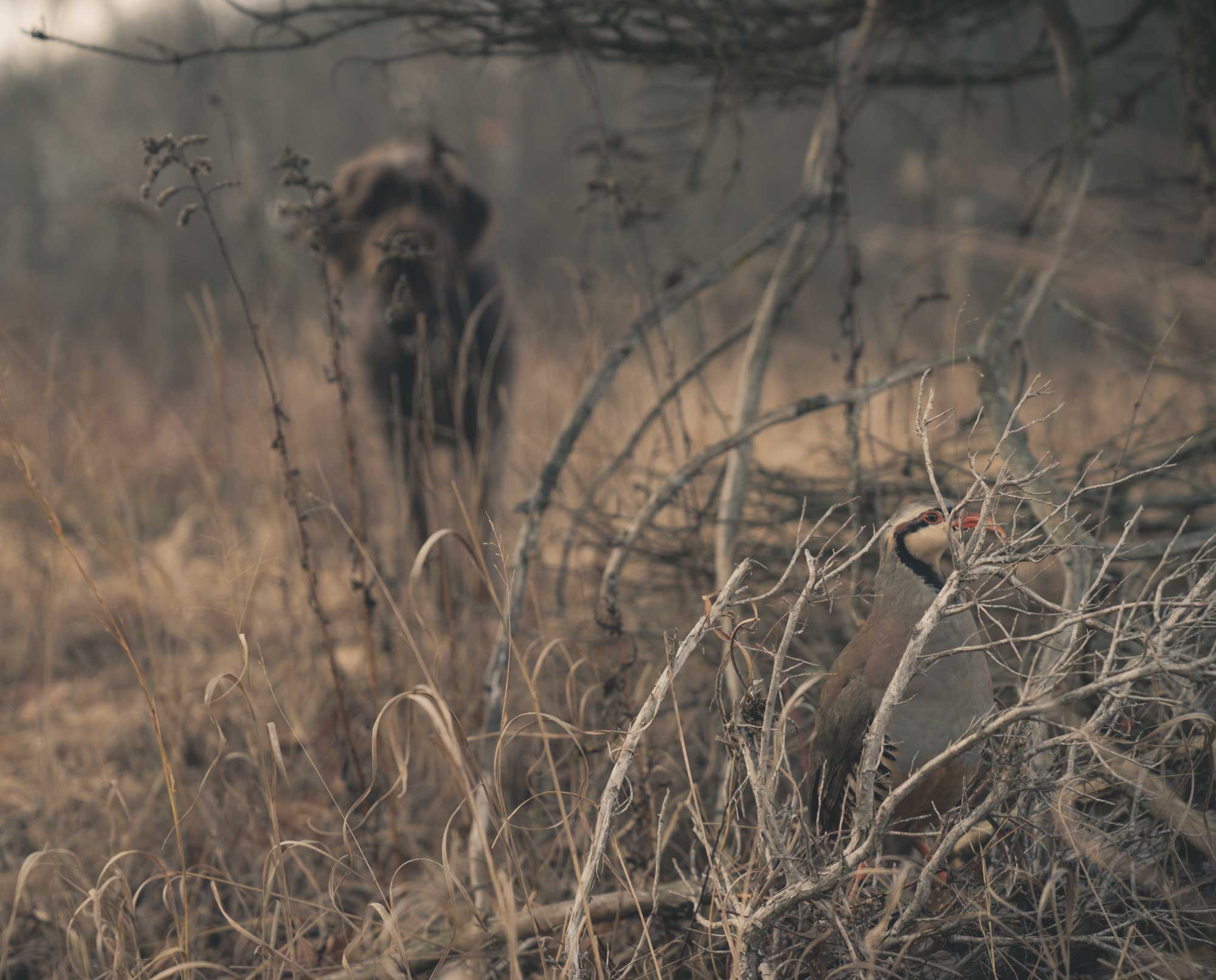
The commands we choose to train our dog are important in more ways than we realize
Our working relationship with our bird dogs is built on communication. Even though dogs can’t speak or comprehend language, we have a constant flow of communication traveling back and forth between dog and human. Dogs watch us to read our body language, they listen to our tone to discern our mood, and of course they hear and respond to spoken command words.
The response to a spoken command creates the illusion that the dog understands that particular word, but what’s actually happening is that you’re triggering an association that was made during training. We use “sit” to command a dog to sit simply because it makes sense to us, but you could also train that behavior with the command word “cheese” if you felt like it. The point is, the dog associates a desired behavior with a triggering command word, not to a comprehension of the English language. Choosing command words that match English words is simply easier on the trainer, rather than having to remember a complicated code.
That being said, putting some forethought into the commands that you’ll use can help make certain tasks easier or prevent misunderstandings down the road with your bird dog.
Choose short command words that carry well
When I was preparing to get my first puppy, I didn’t think much about the words associated with bird dog commands. Looking back, I realize that there were a lot of lessons and subtle comments I missed while afield with other upland hunter’s dogs, which exposed just how important words can be. I first started to think about it the day we put six puppies through a vigorous test of nonsense—that resulted in owning one unsuspecting new household member.
Our Wirehaired Pointing Griffon breeder, Ray Wolfram of Wildrums Kennels, looked at me as I called “come” to the chaotic tangle of puppies, with little expectation my recall command would work.
“Use the word ‘here,'” he said, “it’s louder coming out of the lungs and will carry further in the woods.” It was amazing how such a basic thought seemed so revolutionary to me. It was logical and practical and began turning the wheels in my head about where else this could matter in bird dog commands.
In addition to choosing words that can carry loudly across a field, it’s important to select command words that are short and to-the-point. Remember that the dog is not actually understanding the definition of a word or phrase; they have simply associated a spoken sound with a desired behavior. For reasons of simplicity and clarity, words like “sit,” “here,” and “whoa” are better choices than “have a seat,” “get over here right now,” or “hold up don’t move!”
Avoid command words that are commonly spoken
The next time it dawned on me that a word choice could have a huge impact on my dog’s performance was when I was filming with another dog for a 2017 Project Upland Film. As a filmmaker, I can sometimes talk a lot in the heat of the moment while trying to guide a perfect angle for a shot. Things are happening quickly and the bird certainly isn’t going to wait for the right moment—or give you a chance for a retake.
These intense situations exposed the curse of the word “okay” as a release word. I would casually say things like, “Okay, let’s move in,” or, “Okay, let me get ahead of you guys.”
The poor German Shorthaired Pointer had been trained to release on the word “okay.” Every time I said it, the dog would would break from his point just as he’d been trained to do, much to the frustration of the owner and the confusion of the dog. And let’s face it: we can sometimes be a lot harder to train than a dog. I proved that by accidentally dropping the magic “okay” without fail at the most inappropriate times. This situation made me start to think about how commonly spoken words can be risky choices for bird dog commands.
The experience reminded me of a television show I watched where a group of people were hypnotized. The key word for the hypnosis state was an obscure word, which was intentionally chosen so that no one would accidentally say it and break the hypnosis. In this case, the near-hypnosis of the sacred “whoa” bird dog command matters almost as much as the command to release a dog, which means the release word must be carefully chosen
Some options for a “safe” release word include “release,” “go on,” or even just saying the dog’s name. None of these are likely to be accidentally spoken in a training or hunting scenario, which will set your dog up for success instead of misunderstanding.
Avoid command words that sound alike
Some dog trainers teach that similar-sounding words “no” and “whoa” can be confusing and are setting your dog up for misunderstandings when training. Perhaps instead of “no,” you can correct your dog with an “ah ah” or other negative sound. An alternative to “whoa” could be “stop” or “freeze.” Whatever you choose, just be mindful of how it fits into the library of commands that you are building with your bird dog.
Give commands, not sentences
As social creatures, we are prone to communicating with those around us—often a lot. Although your bird dog may give the impression of hanging on your every word, they are not conversationalists. Instead, they are observing your body language, discerning your tone, and listening to your babbling while trying to pick out a known command. If this is all happening out in the field, then they are not able to give their full and undivided attention to the search for birds.
While there’s nothing wrong with whispering sweet nothings to your dog while relaxing around the house, break yourself of this habit when you’re in the field and need to have clear, action-oriented communication with your bird dog. Keep the commands clear, concise, and easy to understand so that your dog can stay focused on the task at hand.
These are all things to consider when building up the library of words that we use for our bird dogs. A little advanced planning and forethought can help avoid misunderstandings or frustration for both you and your dog. For now, my pup only knows a few commands—but I will be mindful in the future to pick these words carefully. My dog needs the opportunity to perform at his highest level without confusion in a talking group of upland hunters.
